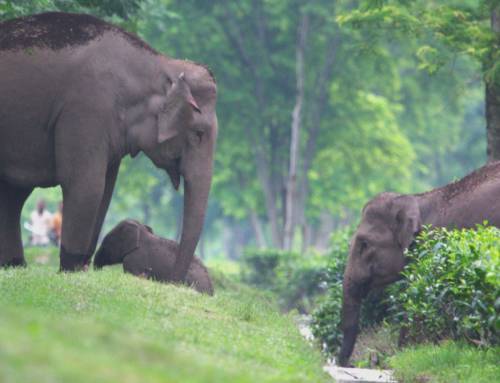Research article: Karanth, K. K., Kramer, R. A., Qian, S. S., & Christensen, N. L. (2008). Examining conservation attitudes, perspectives, and challenges in India. Biological Conservation, 141(9), 2357–2367
Blog Author: Sikha Hariharan
Key Highlights:
- India’s conservation history is marked by debates over issues such as reserve rights, conservation-development initiatives, and conservation policies, among a few. Divergent opinions often divide conservationists, hindering effective conservation efforts.
- In 2006, a survey targeted 312 Indian research and conservation practitioners to assess their perspectives on key conservation issues and policies, aiming to understand factors shaping differences and build consensus to address emerging challenges.
- The authors expected differences in perspectives to be influenced by professional affiliation, educational background, primary area of focus, and conservation experience of the participants.
- Authors examined viewpoints on conservation and research efforts, research quality, result dissemination, protected area effectiveness, rights of people in reserves, the role of charismatic species as umbrella species, and four major conservation policies.
- Survey respondents expressed concerns about inadequate emphasis on aquatic biodiversity, perceived poor research standards, and poor dissemination of research results. Most participants (90%) considered the reserves effective, yet voiced concerns about insufficient land allocation for the same.
- Opinions varied on the effectiveness of participatory conservation, policies such as Project Tiger and Project Elephant, with recommendations including the revision of the Forest Rights Act.
- The study highlights that the diversity of attitudes and opinions among Indian conservationists emerges from factors such as participants’ professional affiliation, age, and educational background.
- The study concludes with a call for collaboration, urging discussions between actors from diverse backgrounds to diminish conflict, foster constructive debate, and promote effective conservation strategies.
India faces the challenge of balancing rapid population growth and economic expansion with biodiversity conservation. Shaped by colonial legacies, India’s conservation history is marked by debates surrounding the rights of people within reserves, conservation-development initiatives, and conservation laws and policies. These differing opinions have polarized conservationists, hindering effective conservation efforts. Recognizing the importance of understanding the underlying reasons for these differences, Dr. Krithi Karanth and collaborators from Duke University examined the attitudes and perspectives of Indian conservationists and the factors shaping differences in their perspectives.
The survey, conducted between January and August 2006, targeted 312 individuals to assess viewpoints on key conservation issues and policies in India, including conservation and research efforts, quality of biodiversity research and dissemination of results, effectiveness of protected areas, use of force to protect reserves, opinions of people living inside reserves, and effectiveness of charismatic species as umbrella species. Furthermore, the authors examined attitudes toward four major conservation policies and initiatives: Project Tiger, Project Elephant, the Forest Rights Act, and the Tiger Task Force Report. The authors expected differences in perspectives to be influenced by professional affiliation, educational background, primary area of focus, and conservation experience of the participants.
Out of the 167 responses received, 92% were actively involved in conservation. Participants opined a bias towards terrestrial biodiversity, with concerns raised about the lower emphasis on aquatic biodiversity. Indian research was perceived as average relative to global standards, citing factors such as poor science education (37%) and inadequate funding (33%). Participants expressed consensus that research results were disseminated poorly, with limited accessibility and engagement with policymakers and local communities.
While 90% of participants considered reserves to be effective, they believed the current land allocation for protected areas in India was inadequate to conserve biodiversity. About 61% considered people living inside reserves as unsustainable, although 32% believed it could be viable with proper guidelines. Additionally, 76% found the use of force to protect reserves from illegal activities acceptable, with non-academics more inclined to support this than academics. Views on participatory conservation approaches varied, with more support from participants affiliated with NGOs and academic institutions than those working independently or with the government.
About 78% considered tiger and 60% elephant as effective umbrella species. Similarly, 60% viewed Project Tiger, and 51% viewed Project Elephant as successful conservation policies. Age significantly influenced these opinions, with more than 60% of older participants supporting both. About 63% of participants, especially those with doctoral degrees, felt the Forest Rights Act required revision. The survey highlighted mixed opinions on the Tiger Task Force committee report, largely influenced by participants’ involvement in conservation, with 62% of those considering it ineffective.
The survey provides insights into the differences in conservation attitudes among Indian conservationists. The findings emphasize that bridging the gap between stakeholders with diverse backgrounds is essential to India’s conservation challenges, with workshops and roundtable discussions facilitating communication. Understanding the multitude of viewpoints of different actors helps diminish conflict, foster constructive debates, and promote effective conservation strategies.
To access the original article, click here
Keywords: India, Conservation, Attitudes, Opinions, Social survey, People, Wildlife




